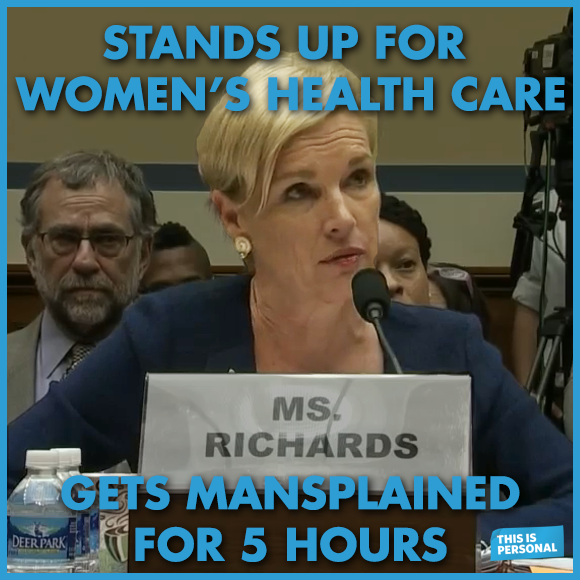Tips From the CoverHer Hotline: Navigating Coverage for Tubal Litigation and Bilateral Salpingectomy

If you’ve been following the news, you may know that interest in sterilization surgery procedures through tubal ligation (“tying your tubes”) or bilateral salpingectomy (removal of tubes) has skyrocketed since the Supreme Court overturned Roe v. Wade. The Affordable Care Act (ACA) requires most insurance plans to cover female sterilization surgery* without any out-of-pocket costs to patients. But when it comes to insurance companies covering birth control (read: following the law) it’s not that simple.
On our CoverHer hotline, we consistently hear from people who have been denied coverage of their sterilization surgery (tubal litigation or bilateral salpingectomy) , anesthesia, or related appointments, and end up receiving some pretty big bills out of the blue.
If you are worried about accessing sterilization services, we’ve put together this list of tips and tricks to help you get your surgery covered with zero out-of-pocket costs.
- Make sure you’re in network. The ACA allows plans to require that you get your surgery done by an in-network provider in order to have no out-of-pocket costs. Call your plan to double check that all your services will be performed in network, or even better, get it in writing. If your plan does not have an in-network provider who can perform your surgery, insurance must cover the cost (without any cost sharing) of using an out-of-network provider. But you may have to appeal to get that procedure covered.
- Pay careful attention to billing codes. These 5-digit codes can be so confusing that people actually go to school to study them. Without having to sit through the most boring class ever, here’s what you need to know:
Medical providers use these codes to tell insurance companies what happened during an office visit, procedure, surgery, etc. And every preventive service (like a sterilization surgery) has a unique preventive service billing code. If the provider or their billing department lists the code as something other than a preventive service, the insurance company may not apply the zero cost-sharing provision correctly.
When this happens, you could get charged thousands of dollars for your surgery or get a slew of unexpected bills. That’s why the Women’s Preventative Service Initiative (WPSI) made this super helpful coding guide. Hint: The most relevant pages are 23-25.
🔥HOT TIP: Show this coding guide to your doctor to confirm which billing code best describes the sterilization procedure you have agreed upon. It may be helpful to make sure the doctor’s billing department is on the same page as you and your provider, and that they will use this code when they send the bill to insurance. Next, confirm with your insurance company that they cover this code. They should say yes. If they do, it’s best to get it in writing. An insurance representative may cheerfully tell you that your surgery is covered… only to later send you a not-so-cheerful bill.
If they say no, tell them that you know the ACA requires coverage of sterilization surgery, and ask them about medical management (see below) and the waiver process (see below).
🚨POTENTIAL ISSUE: Insurance tells you that 56881 or another sterilization code isn’t preventive, but you found it in the WPSI coding guide.
The bottom line: It is a preventive code, and your insurance needs to cover it (unless they are practicing medical management—see below). Make sure it is being filed with the proper IDC-10 code, Z30.2. If you experience this issue, we recommend filing a written appeal with your insurance plan, and we have a template letter specifically for this issue.
- Be aware of medical management practices.
The ACA says insurance plans have to cover at least one type of each FDA-cleared birth control method.
This means that technically they are allowed to cover one type of female sterilization surgery at 100% of the cost and impose cost sharing (co-pays, deductibles, etc.) on any other type of female sterilization surgery. For example, if you are seeking a bilateral salpingectomy, but your insurance plan chooses to only cover tubal ligation, then your plan is practicing so-called “reasonable medical management.”
However, you can still get your preferred surgery covered. As reiterated in recent guidance from the federal government, if plans choose to practice medical management, they must provide an “easily accessible, transparent, and sufficiently expedient exception process” through which patients can get any FDA-approved birth control covered. If your doctor or health care provider recommends a specific type of birth control for you, your insurance plan must cover it at 100% of the cost.
The bad news: Insurance plans rarely, if ever, have these waiver or exception procedures in place. If you are given the runaround about the waiver process, the best thing to do is file a written appeal. We have a template appeal letter specifically for situations like this one, so please reach out if you experience this issue.
- Any related services—like anesthesia—must be covered as well. The most recent guidance from federal agencies makes it explicitly clear that anesthesia and other related services like doctor’s appointments must be covered by the insurance plan at 100% of the cost. If you want help drafting an appeal letter specific to anesthesia and related services, please reach out!
For template appeal letters specific to bilateral salpingectomy billing code issues, citing the newest guidance on related services like anesthesia, or the absence of a waiver/exception process in the case of medical management, please reach out using our webform. We are happy to assist with and review your appeal letter.
If you have been experiencing any of these issues, we’d love to hear your story. Together, through collective knowledge and action, we can finally compel reluctant insurance companies to give us the essential birth control we need.
*This blog aims to use gender-inclusive language whenever possible. However, the recommendations for implementing the ACA utilize the term “female sterilization surgery” to refer to surgical sterilization procedures for people who can become pregnant. Vasectomies are not required to be covered without cost-sharing by the ACA’s preventive services requirement.




